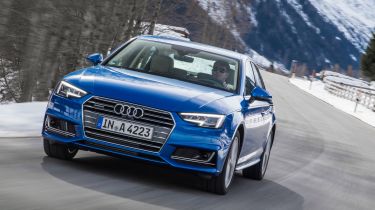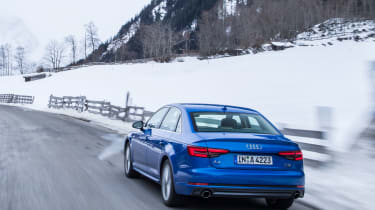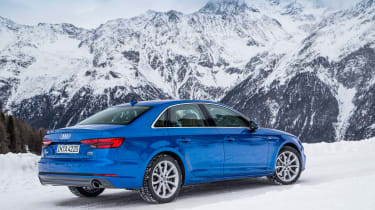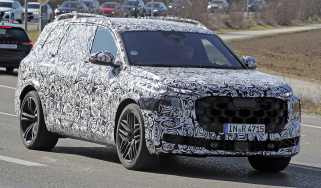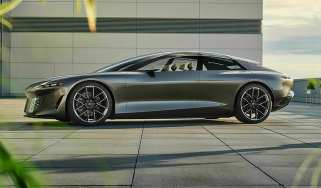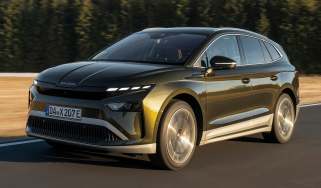New Audi 'quattro with ultra technology' aims to make 4x4 green
Audi thinks all-wheel drive cars can be green and its new 'quattro with ultra technology' sets out to prove it
Buyers of all-wheel-drive cars have always paid a penalty in fuel efficiency in return for the extra traction and grip that come with four driven wheels. But now Audi - arguably the pioneer of four-wheel drive in production cars in the early eighties - believes that it has chipped a bit of the extra fuel consumption away, thanks to a clever new set-up that promises to boost mpg and lower CO2 emissions of lots of the firm’s quattro models.
Starting with the A4 allroad quattro this summer, the company will offer what it calls ‘quattro with ultra technology’. In effect, it’s a similar principle to the Audis with transverse engines, but now available on cars with longitudinal motors, such as the A4, A6, A8, Q5 and Q7. It’s compatible with manual and dual-clutch DSG transmissions, and can cope with engines producing up to 500Nm of torque. Anything more potent than that - hefty V6 and V8 diesels, mainly - will stick with the regular quattro.
• Best 4x4s and SUVs to buy now
How does Audi's quattro with ultra technology work?
By default, the new system runs in front-wheel drive, cutting down on the effort (and fuel) required to power the rear wheels. The set-up uses a pair of clutches - one between the gearbox and the propshaft, and the other on the back axle - but despite the extra complexity, it’s actually around 4kg lighter than the regular quattro layout because some key components, including the propshaft, don’t need to be built for full-time use.
The system uses an army of sensors to detect a host of developments that could indicate the need for four-wheel drive - everything from any wheelspin at the front wheels to the amount of steering input and the throttle pedal position - and then feeds this information into a new processor sited in the gearbox. Audi’s argument is that the new CPU can, in effect, ‘predict’ when the front wheels are on the cusp of breaking traction around half a second before it happens - and transfer some torque to the rear wheels accordingly.
Equally, the Audi’s stability control sensors supply information about the driver’s style - whether they’re behaving in a fashion that’s defined as ‘dynamic’ - and this data can also prompt the system to start driving the rear wheels. Finally (but in only a small number of situations, Audi claims), the system will react in a split-second if the car suddenly loses grip - if it moves from bone-dry asphalt to sheet ice, for example.
How much fuel can quattro with ultra technology save?
Audi hasn’t provided precise figures on how much fuel the new quattro can save, but its engineers averaged a gain of 0.3l/100km (around 7g/km of CO2) during testing in Germany. That advantage is likely to increase in better conditions, such as bone-dry motorway mileage.
We’ve tried the new quattro with ultra technology in a 2.0-litre petrol A4 (248bhp), and it’s next to impossible to discern any difference between it and the old system. Our car was fitted with a data logger which showed when the four-wheel drive was being activated and over a route of around 45 miles, in a mixture of urban and mountain roads, plus a stretch of motorway, the A4 ran in front-drive almost half the time.
The A4 quattro ultra didn’t feel any less stable during hard cornering, and since the system also sends power to the rear wheels to avoid torque steer - one of the key demands of quattro customers, apparently - you’re not left feeling like you’re driving a front-wheel-drive car at all.
When will quattro with ultra technology go on sale?
The new quattro with ultra technology will make its debut on the A4 Allroad due this summer - initially with petrol engines and a DSG transmission, although it’ll be offered with diesels and a manual soon after. The next model to get the system will be the Q5, while the rest of the A4 range is likely to receive the new tech early in 2017.
Audi says there should be a “minimal” price difference, so the gap between front-drive models and quattro cars should remain around the same.
Would lower fuel consumption prompt you to consider a 4x4 car? Let us know in the comments section below...
Find a car with the experts

